Aphids and mealybugs and usually known as common pests on succulents. They extract the liquid of the succulents, waning the plant and making it more vulnerable to infection. A small number of aphids can be treated, and the plants can develop again. Meal bugs also can be found in the corners of the succulent; hence it is really hard to find them and treat the plant. Therefore, let’s see How to get rid of aphids on succulents
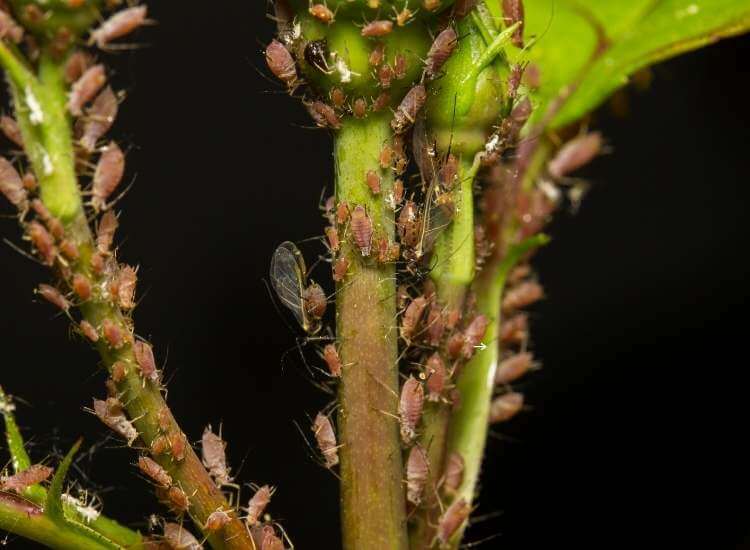
How do you get rid of aphids on succulents?
Rubbing Alcohol Solution
| Mix 1:1 ratio Rubbing alcohol : Water Spray into the affected area |
Rubbing alcohol will kill aphids from your plants and no damage to your plant at all. Take some of the rubbing alcohol and add some into a spray bottle. Splash the plants where the aphids tend to be the most concentrated and let the solvent dry. You can do the same process three days per week for four months.
Make a spray from the same quantity of rub alcohol with water. Use this procedure to handle aphid-infested plants. If you are struggling with a minor infection, another alternative is to use a cotton swab to add full-strength alcohol straight to the pests. This procedure will kill them on touch.
Plain flour
| 2 cups of pure white flour + 5-10 liters of water |
A spray made of 2 cups of pure white flour mixed into 5-10 liters of water seems to be very powerful for aphids and insect pests. For an effective way of getting rid of aphids is to brush the infected plants with flour. Then pests will eat the flour that is clogging their digestive tract, and it will destroy the pests.
Diatomaceous earth (DE) Insecticide
| 1-4 teaspoons of Diatomaceous Earth + 1 liter of water |
Diatomaceous Earth is perfect for your plants and poisonous for the aphids that destroy your plants. Aphids are piercing the plant and extract the moisture of the succulents. They directly put a virus into the plant, which makes it curl and decreases the plant growth. Add diatomaceous soil to aphid-infested or susceptible plants by carefully spraying to the surface or wiping all plant surfaces, along with leaf underparts.
Depending on the insect and the conditions, this phase can take a few hours to a few days. For use with water, Mix 1-4 teaspoons of DE per liter of water and add to lawns and/or shrubs if there are pest issues. The wet spray system works, but only after the solvent has dried.
Dish soap
| few ounces of the liquid dish soap + ¼ cup of water |
You can add a few ounces of the liquid dish soap with ¼ cup of water, and after that rub it onto the parts of the plant. This destroys aphids, and mealy bugs. The fatty acids in the soap make the pests dehydrated. You can control the aphid population by cleaning or watering the plant with a mild water solution with drops of dish soap. You can use soapy water three days a week.
Essential Oils
| 4 or 5 drops of essential oil + 100 ml of water |
Use 4 or 5 drops with each: peppermint, garlic, rosemary then thyme, and mix with water inside a small mist container. Spray on infected plants to kill adult pests, aphid larvae and eggs.
Neem oil
| 1 tsp of neem oil + 1/2 tsp of liquid dish soap + 1 quart of water 4 tsp of neem oil + 2 tsp of liquid dish soap + 1 gallon of water |
Neem oil is terribly useful for small soft-bodied pests. When added directly, the oil will cover and destroy the pest’s bodies – or even delay growth and eating. Mix 1 tsp of neem oil and 1/2 tsp of liquid dish soap with 1 quart of water or 4 tsp of neem oil and 2 tsp of liquid dish soap with 1 gallon of water. Shake well, man. (oil is easier to blend with warm water.) Spray the mixture evenly on all surfaces of the leaf.
Vegetable oil
| 1 cup vegetable oil +1 1/2 cup water + 2 tsp dish soap |
You can use Vegetable oil to Kill Aphids by adding 1 cup vegetable oil, 1 1/2 cup water, and 2 tsp dish soap and spray the mixture on for several days.
Horticultural oil
| 1 cup of cottonseed oil + 1 tablespoon of liquid soap |
You can mix one cup of cottonseed oil with a tablespoon of liquid soap to make this mixture. Use soybean oil or vegetable oil if you cannot find cottonseed oil. Horticultural oils, called dormant oil or dormant spray, have a very specific thickness that makes them effective in killing aphids.
Water spray
Use a strong stream of water each morning until the insects are no longer seen. or you can remove the entire plant from the soil and wash it.
How do get rid of aphids naturally?
Syrphid Fly Larvae
Syrphid flies are known as hoverflies and help to destroy the harmful aphids on succulents. The fly puts their eggs on leaves nearby colonies of aphids. They prey on them.
Soldier Beetle
Soldier beetles fight against these insects. They eat pests. These beetles are not doing any damage to succulents. It will take a sip of the nibble at pollen or the nectar, but they will not eat flowers, fruits, or the plant. Soldier beetles are waiting for prey by lying on flowers, feeding on mates and pollen.
How to Attract and Keep Them
Provide Soldier beetles with different plants which produce pollen. In addition to pests, this fly eats pollen as well.
Parasitic Wasps
Parasitic wasps are very important to kill mealybugs and aphids in the garden. They never harm people.
Green lacewing
- Not dangerous for humans
- Live maximum of 6 months
- Eat moth eggs and aphids
- Mostly can be found in North America
- Names as aphid lions
- Best pals for gardening.
Ladybugs
Ladybugs eat soft-bodied insects like mites and aphids. Very easy to find because of the appearance (black dots and red back). they can help remove Aphids On Succulents
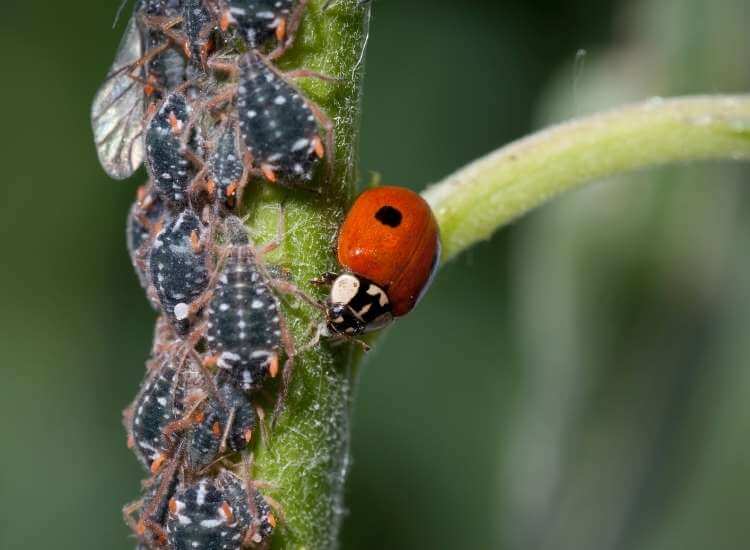
How do I get rid of aphids with Chemicals?
Pyrethrum
The pyrethrum destroys a wide range of aphids, including ants, bees, moths, and flies. Pyrethrin kills pests nearly immediately after contact. Pyrethrum-based sprays are also deemed to be organic-compliant, unlike many conventional pesticides. it can remove Aphids On Succulents You can add pyrethrum botanical insecticide in the morning (early morning) before the sunrise if you are using it to kill the flying animals.
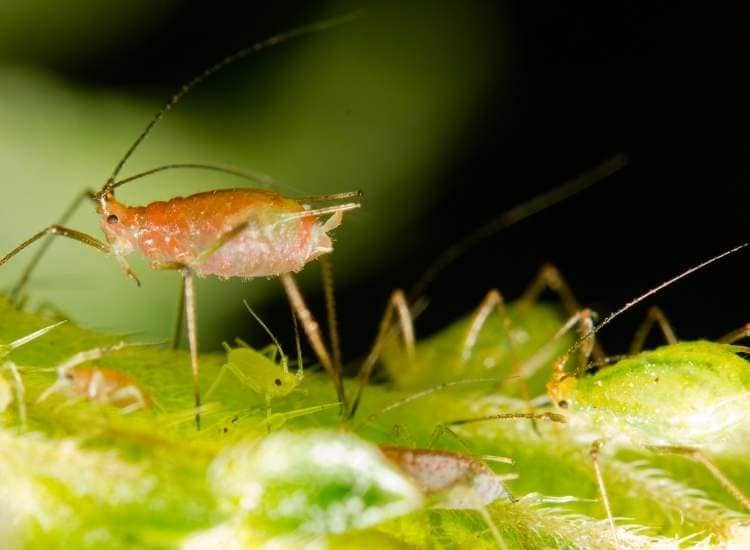
Aphid infestation Symptoms and signs
- Harm sometimes occurs first as spotty yellow discolorations when leaves are attacked by aphids. Behind the leaves can dry out. You can easily recognize attacked leaves by the color and the shape if you check carefully.
- If the plant is growing slowly, speckled, and scrunched leaves of plants may be caused by aphids.
- Be sure to check the leaves undersides because aphids love hiding there.
- Most aphids develop cryptically colored eggs to escape predators. Some animals cover their eggs with wax, which can make them unpleasant.
- The infestation process starts when winged adults come from their winter hideaways in early spring they start flying when the weather is warm enough.
- It reproduces asexually throughout this growth period. The aphid spreads into the root, producing wounds that make plants susceptible to germs and infection.
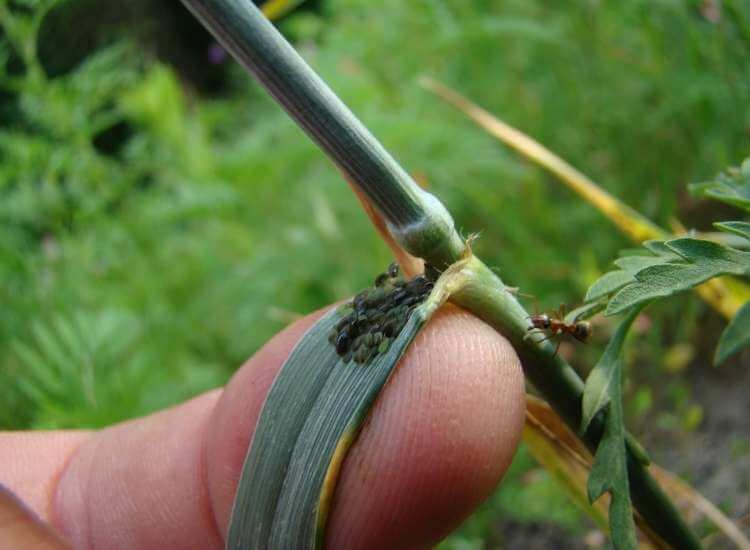
What are aphids
Aphids are tiny insects that extract the essence of the plants; They breed quickly, and a huge number of aphids can harm the plants.
Different types of aphids species of aphids
Weevil
Weevil is a small insect with a long muzzle; they naturally develop inside seeds, branches, or other parts of the plants. A weevil is a small insect, and it breeds in foods like flour, grain, rice, beans, etc. weevils place eggs inside the food.
Black bean aphid
Black bean aphids are very little and Lightweight with a dark color body. This insect has special mouthparts which can extract the liquids from the plants.
Aphididae
This aphid is a pear-shaped insect, and it has a pair of tiny tubes called a cornicle. Usually, this insect is green, but you can find some red or brown insects of this kind too.
Brevicoryne brassicae
This insect is usually identified as the Cabbage aphid. This aphid has a lightweight body with a powdery white appearance.
The Lifecycle of An Aphid
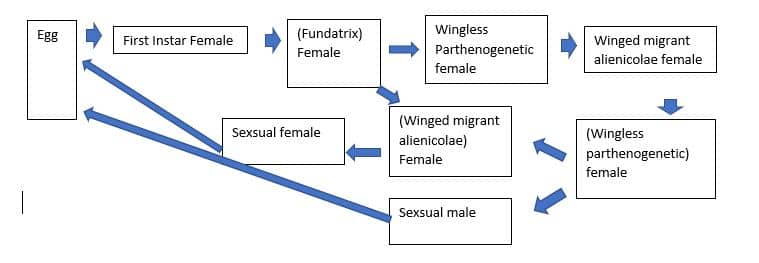
Aphids and Ants’ symbiotic relationship
Ants and aphids have a symbiotic partnership. These two insects are having a benefit when they are together. The aphids give a meal to the ants and ants give protection from hunters who are coming to kill aphids.
Related Questions
How do you get rid of aphids permanently?
Insecticidal soaps, vegetable oils, and neem oils act against pests. You can use the mild water solution and a few drops of dish soap to get rid of aphids on succulents. Clean the leaves of the plant from this solution.
Will vinegar kill aphids?
You can use white vinegar and water to kill aphids. Use a spray bottle or cotton to get the best results. This is going to kill the aphids and the larvae on impact. Keep an aluminum foil near the base of the plants to make it better.
Do banana peels keep aphids away?
Bury banana peels under the soil near the plants which are vulnerable to aphid infestation. Therefore, you can use orange peel also as a natural way to get rid of pests because it damages the waxy coat of the aphids.
What is the best way to get rid of aphids?
It is constipating the pests. Insecticidal soap, vegetable oils, and Neem oil are effective against aphids. You can use white vinegar and water to kill aphids. Use a spray bottle or cotton to get the best results
From Where Do Aphids Come?
Most of them have seen aphids on flowers, peppers, or some sort of fruit. Small lightweight greenish, black or yellow insects normally come in colonies.
How do I remove aphids with soap and water?
A few drops of dish soap and mild water solution will help you to resolve the aphid issues. Soapy water can be returned every 2-3 days for two weeks.
What smell do aphids hate?
Aphids, in particular, dislike the powerful smell of marigolds and catnips. But. they make perfect companion plants for precious crops that you’re trying to cover. Therefore, Herbs that we know to be wonderfully fragrant, such as dill, fennel, cilantro, chips, and peppermint, also have smells that discourage aphids.
Read more on How do I know If My Succulent Roots are Rotting? Simple Guide
Read more How to get rid of Fungus gnats on succulents | 20 ways
